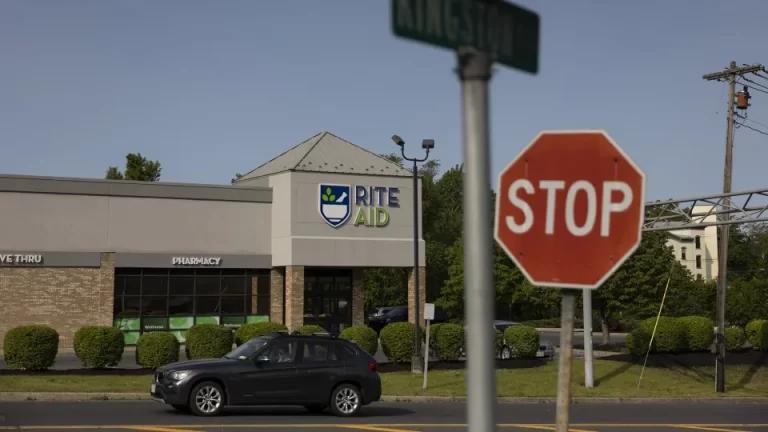Drugstore chains for decades saturated US cities, suburbs and small towns with new stores. Now, they are closing thousands of stores, leaving gaps in communities for medicines and essentials. Researchers find pharmacy closures lead to health risks such as older adults failing to take medication.
Rite Aid, the third largest standalone pharmacy chain, filed for bankruptcy Sunday and will reportedly close roughly 400 to 500 of its approximately 2,200 stores. Rite Aid was undone by competition from larger rivals, its $3.3 billion debt load, and expensive legal battles for its alleged role in fueling the opioid crisis.
It comes amid walkouts by Walgreens pharmacists and technicians around the country and at CVS stores in Kansas City over low pay and understaffed stores.
Drug store struggles
Rite Aid’s bankruptcy reflects long-term struggles in the retail pharmacy industry. The majority of drugstores’ sales comes from filling prescriptions. But their profits from that segment have declined in recent years because of lower reimbursement rates for prescription drugs.
The front end of drugstores, where they sell snacks and household staples, also face pressure. CVS, Walgreens and Rite Aid are eliminating some locations as they face rising competition for these items from Amazon, big-box stores with pharmacies like Walmart, and Dollar General in rural areas.
Although drugstores benefited during the pandemic from people getting Covid-19 vaccines, fewer consumers visited stores to shop and prescription volumes fell because people were getting fewer elective procedures.
“The pandemic was not a strong time for drugstores,” said David Silverman, a senior director at Fitch Ratings. Theft has become a problem for drugstores in some locations, and some stores have resorted to locking up products to prevent theft. But this has made the customer experience worse.
“Theft appears to be hitting drug retailers more than other categories,” Silverman said.
Drugstores are trying to pivot into the more lucrative health care industry in recent years and become primary care providers. CVS acquired health insurer Aetna, and Walgreens took a majority stake in primary care network VillageMD.
But this strategy requires fewer brick-and-mortar retail stores.
Pharmacy deserts
Retail pharmacy chains overexpanded in the past, often pushing out local pharmacies in the process. The number of independent pharmacies decreased by nearly 50% from 1980 to 2022, according to McKinsey.
Rite Aid, CVS and Walgreens have also been shuttering stores for years. CVS, the largest US chain, closed 244 stores between 2018 and 2020. In 2021, it announced plans to close 900 stores by 2024.
Walgreens said in 2019 it would close 200 stores and in June announced an additional 150 store closures. The loss of a retail pharmacy can leave a void, especially for lower-income households.
Roughly one out of every eight pharmacies closed between 2009 and 2015, which disproportionately affected independent pharmacies and low-income neighborhoods, according to a study published in the Journal of the American Medical Association.
The study found that pharmacies at greatest risk for closures are those with a large customer base on public insurance, which have lower reimbursement rates than private plans, as well as independent pharmacies.
— CutC by cnn.com


